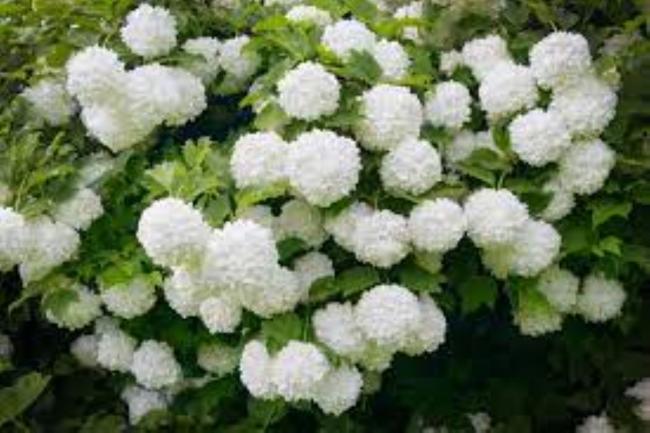Optimization of flowering planning and post-harvest conservation of some cut flower species cultivated in the Riviera Ligure di Ponente

The main goal of the project is to increase the profitability of three important cut flower crops (Viburnum Opulus snowball, ranunculus and peony) grown in the Riviera Ligure di Ponente. This will be achieved with two approaches: 1) designing and testing innovative cultivation and forcing protocols of the three species in the Riviera Ligure climate in order to be able to produce in the period of the year when there is very little production; 2) testing preservation protocols that allow to better preserve the quality of the cut flower of the three species.
The project is divided into the following activities: 1) Project coordination and reporting; 2) Design and testing of methods for overcoming the chilling requirement of Viburnum opulus with physical methods (thermal treatments of cold and / or hot) / chemical (biostimulants, hormones); 3) Design and testing of the effectiveness of chemical or physical treatments for the induction of flowering process in peonies and ranunculus, also through the use of pot cultivation and climate chamber; 4) Design and testing of the effectiveness of different post-harvest treatments on maintaining quality and extending life in ranunculus, peony and Viburnum opulus; 5) Dissemination of the results obtained.
In the last 15 years, a deep economic crisis hit the cut-flower floriculture of the western Riviera Ligure: the historical crops mainly based on carnations and roses has been largely replaced by the cultivation of ranunculus, anemones, poppies and calla lilies as well as from other minor species such as the snowball (Viburnum opulus) and the peony. Today, the ranunculus is the first cut flower crop cultivated on the Province of Imperia both in terms of number of farms and cultivated area. In the last years, the Viburnum opulus, (snowball) has acquired a good economic importance for the western Riviera Ligure: it is fundamental for the composition of certain bouquets and it appears an excellent substitute of the cultivation of the rose in the greenhouses. Finally, the peony is also acquiring economic diffusion over the years, especially in view of a crop rotation as an alternative to chrysanthemum and ranunculus. The lack of a large expansion of its market is due to short shel-life of the cut flower and the restrict period of cut flower harvesting. A better planning of the ranunculus flowering would allow to the floricultural companies to concentrate this product in the periods of greatest request by the market and thus, it could produce a strong increase of the profitability of this cultivation as well as a strengthening of the sales position of the Ligurian cut flower growers on national and international cut flower markets.
Development and testing of thermal and chemical protocols to anticipate and postpone the flowering of the Viburnus Opulus. The aim of these project activities is to anticipate or delay the flower induction of this ornamental plant. The early and the delayed production allow the growers obtaining higher and remunerative prices for their ornamental product. The commercialization of this flower out of season or at beginning or at the end of the production period can increase the competiveness of the ornamental farms.
Development of protocols for the forcing rhizomes of ranunculus, through the application of low-temperature and/or high temperatures cycles, combined with chemical treatments for breaking of the dormancy of flower buds. The dormancy brackdown is a complex process, beacuse it is well synchronised with the environment. In the dormancy, endogenous and environmental factors are involved and all these factors must be sttudied and charcterised for the dormancy removal. The innovation is represented by the developing a protocol for the bulbs preparation in order to give the opportunity to the grower to plan the flower production and have them in the best commecialization period.
Development and testing of protocols for the cultivation of potted peonies, in order tobe able to use climatic growth chambers to extend its flowering period. Peonies are generally grown on soil in greenhouse, the innovation is represented by the cultivation in pots which can be transferred in growth chamber for thermic treatments which can stimulate the flower induction. The flowering will be also stimulated using plant growth regulators. In particularly, gibberellins and cytokinins will be used as flowering promoters.
Development and testing of protocols to improve the quality and post-harvest of the ranunculus cut-flower. The quality of cut flowers depends from the visual apperance and from the vase life duration. The postharvest life is defined by the leaf yellowing of flower senescence. The innovation of this project is represented by the identification of the best postharvest treatments that can preserve the quality and extend the vase life. The postharvest treatments will be performed using thidiazuron, a compound with cytokinin-like activity and gibberellins. These are both inhibitors of leaf yellowing and flower senescence with the preservation of quality and extending the vase life of cut flowers. The possible use of selenium for the improvement of the shelf-life of ranunculus will also be investigated: in other species, selenium addition showed marked slowing effects of senescence, and one goal of the project is to test these effects also on the preservation of the vase life of ranunculus.
Development and testing of protocols to improve the quality and the post-harvest of the Viburnum opulus as cut flower. The commercialization of Viburnum opulus must be associated with an improved vase life that can be achieved by the optimization of posthrarvest treatments based on citric acid for improving water relation and inhibitors of flowers senescence. Among the different treatmetnes will be used the ethylene inhibitors such as 1-methylciclopropene.
Development and testing of protocols to improve the quality and post-harvest of the peony as a cut flower. Peonies have nice a big flower and its quality is essentially associated to the flower senescence. The project activities will be oriented on the inhibition of ethylene biosynthesis and perception. Several inhibitors will be tested in order to extend the vase life of the products.
Documentazione del workshop Innovazione e conoscenza per l’agricoltura: le sfide del futuro per la cooperazione in Liguria
I Gruppi Operativi, Liguria, PEI-AGRI, Italia| Titolo/Descrizione | Url | Tipologia |
|---|---|---|
|
Sito web del progetto
|
Sito web
|
|
|
Sito del capofila
|
Link ad altri siti che ospitano informazioni del progetto
|
|
|
Sito del partner
|
Link ad altri siti che ospitano informazioni del progetto
|
|
|
Sito del partner
|
Link ad altri siti che ospitano informazioni del progetto
|
